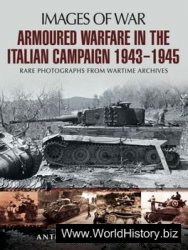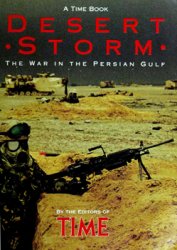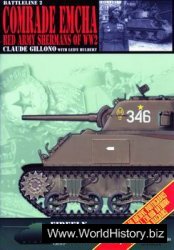Sary. On the night of November 7-8 1941, Bomber Command lost 21 aircraft from a force of 169 dispatched to Berlin. Peirse’s handling of the operation aroused criticism from Churchill and Portal. This led to a directive to conserve Bomber Command’s strength until better equipped and, in effect, to Peirse’s replacement by Harris, which followed early in 1942. Having thus, to a considerable extent, lost Portal’s confidence in Europe, he also, in due time, forfeited that of Mount-batten in Southeast Asia. The brilliant prospects which seemed to await Peirse at the beginning of the war were not realized and degenerated into controversy and frustration. ANF.
Peleliu. As a preliminary to their invasion of the Philippines, the Americans assaulted the Palau Islands, 450 miles (725km) east of Mindanao, on September 15 1944. On Peleliu the US 1st Marine Division faced the precipitous Umurbrogol Ridge, where the Japanese had converted natural caves into a formidable series of interconnected strongpoints. The Marines and the US 81st Infantry Division, who relieved them, together lost nearly 2,000 killed before organized Japanese resistance ended on November 27.
Peltz, Maj Gen Dietrich (b. l914). A distinguished commander of “Stuka” units, Peltz was in 1943 appointed by Goring as Angriffs-fuhrer England (Assault Leader, England). Commanding Flieger-korps IX (c550 bombers based in northern France and the Low Countries), he launched a generally unsuccessful series of “revenge” raids on British cities (the “Little Blitz”) from January 1944.
Penang. Offshore island, northwest Malaya. Its air and naval facilities were captured near-intact by the Japanese, December 17 1941. Used as a base by Germany’s Far East U-boat force, 1943-45.
Peng Teh-huai (Dehuai) Marshal
(1900-1972). Chinese. Commanded the Chinese People’s Volunteers during the Korean War. A participant in the “Long March” he had occupied a number of senior military positions during the Chinese
Civil War, before being given the Korean assignment in October 1950. At first Peng achieved success against the Americans by surprise and encirclement, but his forces lacked the mobility to exploit their initial victories. Peng himself soon concluded that he could not drive the un command from Korea. When truce talks began and the war entered its static phase, he built up a strong defence line. He was prepared to expend men recklessly in attacks on outposts in order to maintain the military initiative and put pressure on the UN side at Panmunjom. The year after the armistice he returned to China. CM. See also
CHINESE FORCES IN KOREA.
Pennsylvania. US battleship. Launched 1915. Damaged in dry dock at Pearl Harbor, but repaired and saw extensive use in shore bombardment role at Aleutians, Gilberts, Marianas, Lingayen Gulf, and also fought at Leyte Gulf. Suffered kamikaze damage and nearly sunk by torpedo (1945). Expended in atomic tests at Bikini (1946) and as gunnery target (1948).
Pentagon. The US Department of Defense in Arlington near Washington, DC.
People’s Army of Vietnam (PAVN). Grew out of the guerrilla
' movement organized by Vietnamese communists in the mountains near Vietnam’s northern border in 1940-45. On December 22 1944, 34 men and women from this movement were commissioned the Vietnam Propaganda and Liberation Unit, the nucleus of a mobile force that was to become the pavn. With additions from other guerrilla units and recruitment following the August Revolution, this force grew to nearly 100,000 combatants by December 1946, when war broke out with France. For officers the PAVN initially relied upon party members who had been involved in the guerrilla movement, few of whom had had much formal military training. After the August Revolution, rapid expansion created opportunities for educated middle class youths to become officers through short courses, but subsequent developments and political reforms in 1953 favoured the rural poor. By the war’s end in 1954, the PAVN had six divisions and 160,000 regular troops supported by 70,000 regional forces and 100,000 local guerrillas. Weapons and equipment for the most part had been captured from the French or received, after 1950, from China.
In 1958, Soviet assistance helped the PAVN begin to modernize its force structure and professionalize its officer corps. Separate branches for navy, air, radar and other functions emerged. “People’s War” remained the official doctrine, but officers began training to defend fixed positions by conventional means. When the party decided, in 1959, to support an armed struggle for reunification in the South, it was assumed the pavn would provide only logistical support while defending the North. However, the inability of Southern revolutionary forces to prevail in the face of American intervention caused the party to commit pavn regulars to combat. The first whole unit entered the South in December 1964. PAVN regulars increasingly filled the People’s Liberation Armed Force (plaf) and operated throughout the South. From 1968 to 1972, the number of pavn troops in the South remained fairly stable at about 80,000 to 90,000, then rose to about 150,000 in 1974 (the PAVN total then was 570,000, organized into 18 infantry divisions, two training divisions and 10 regiments of artillery). With 900 Soviet-model T-34, T-54 and T-59 tanks and nearly 1,200 122mm and 130mm field guns, the pavn, on the eve of the final offensive in 1975, was materially inferior to its adversary, the arvn, but it enjoyed the crucial advantage of freedom to concentrate force at the time and place of its choice. In December 1978 the PAVN occupied Cambodia with 200,000 men (reduced to 100,000 in 1988), and it waged a short defensive action against a punitive attack by China in Febru-ary-March 1979. At its peak of
1,000,000 men in the mid-1980s, the PAVN was the world’s fourth largest army. WST.




 World History
World History









